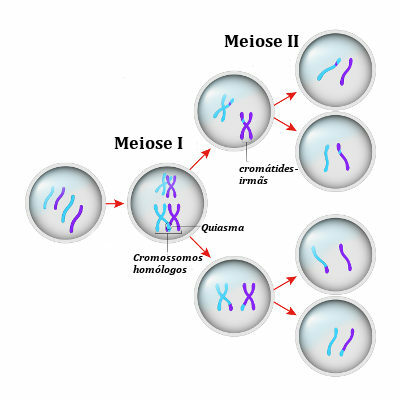Radiation it is a physical process of emission (output) and propagation (displacement) of energy through particles or electromagnetic waves in motion. This process can take place in a material medium or in space (vacuum).
are examples of radiations well known and commented: alpha, beta, gamma, X-ray, ultraviolet, visible light, radio waves, infrared, microwave, etc.
See too:Historic nuclear accidents
1- Classification of radiations
According to their origin, the radiations are classified as natural or artificial.
1.1- Natural
are those radiations that come from a source not produced by human technology and that occur spontaneously. Among some examples, we have nuclear radiation, eliminated from inside the nucleus of the atom of a chemical element.
Natural radioactive elements can be found in rocks or sediments, for example. Another example of natural radiation is cosmic radiation (protons, electrons, neutrons, mesons, neutrinos, light nuclei and gamma radiation) from solar and stellar explosions.
1.2- Artificial
They are radiations produced from electrical equipment, in which particles, such as electrons, are accelerated. This is the case of tubes of X-ray used in radiodiagnosis.
There are also radiations produced from non-electric equipment, which are chemical elements radiated from the acceleration of particles.
See too: Ionizing power of natural radioactive emissions
1.3- Nuclear
These are radiations that come from inside the nucleus of an unstable atom. The nucleus is unstable when the atom has, on average, 84 or more protons inside. There are only three nuclear radiations: alpha (α), beta (β) and gamma (γ).
2- Types of radiation
According to their ability to interact with matter, radiation is classified as ionizing, non-ionizing and electromagnetic.
2.1- Ionizers
They are radiations that, when they come into contact with atoms, they promote the exit of electrons from the orbits, making the atom become a cation, that is, an atom deficient in electrons.
These radiations can cause ionization and excitation of atoms and molecules, causing changes (at least temporary) in the structure of molecules. The most important damage is what happens to the DNA.
Among the main examples of ionizing radiation are:
alpha radiation: It is composed of two protons and two neutrons and has low penetration power.
beta radiation: it is formed by an electron and has penetration power with respect to alpha, gamma and X-ray radiation.
gamma radiation and X radiation: they are electromagnetic radiation that differ only by origin (gamma is nuclear, and X-ray is artificial) and have high penetration power.
2.2- Non-ionizing
These are radiations that are not capable of removing electrons from the orbits (electrospheres) of their atoms. So they remain stable atoms. These radiations cannot cause ionization and excitation of atoms and molecules. Thus, they do not change (at least temporarily) the structure of molecules. Among the main examples of this type of radiation, we have:
infrared: is a radiation that is located below the red in the energy diagram, having a wavelength between 700 nm and 50000 nm.
microwave: are radiations produced by electronic systems from oscillators, presenting a higher frequency than radio waves. They are used domestically to heat food and can carry TV or electronic communications signals.
-
Visible light: has a frequency between 4.6 x 1014 Hz and 6.7 x 1014 Hz, with a wavelength from 450 nm to 700 nm. It is capable of sensitizing our vision.
Do not stop now... There's more after the advertising ;)
Ultraviolet: radiation emitted by some atoms when excited, following the emission of light. It has a wavelength between 10 nm to 700 nm. Example: mercury vapor lamps (Hg).
radio waves: are low frequency radiation, around 108 Hz, with a wavelength of 1 cm at 10000 nm. They are used for radio transmissions.
2.3- Electromagnetic
These are waves that have a magnetic field and an electric field, which propagate in air or in a vacuum at a speed of 300 000 km/s. These radiations (gamma ray, X-ray, ultraviolet, infrared, microwave) differ by their wavelengths, as we can see in the image of the electromagnetic spectrum bellow:

Wavelengths of different types of electromagnetic radiation.
3- Damage from radiation
Animals, plants, soil, water and air can all be affected by radiation, each in a different way. The soil, water and air, in reality, when contaminated with radioactive matter, become means of disseminating radiation to living beings.
In living beings, radiation basically leads to two effects:
Gene mutations: the action of radiation is capable of modifying the cell's DNA, causing a cell to lose its function or start performing a new function. Example: genetic mutations can lead to the formation of new tissues or cause a cell to play a new role, thus promoting the appearance of a tumor.
Molecule Breaks: radiation can break the molecules' DNA and impair the cell's multiplication process. This process can make the cells no longer able to transmit their genetic heritage during their multiplication. Cellular function may or may not be affected.
See too:Difference between radioactive contamination and irradiation
It is worth noting that the extent of damage caused by radiation depends on two very important factors: the dose (amount of radiation that the body received) and the exposure time.
→ short term harm
Nausea
vomiting
Diarrhea
Fever
Headache
burns
Change in blood production
Platelet breakage
Drop in immune resistance
→ Long term harm
Skin, lung and other cancers
Presence of radiation throughout the food chain
Decreased fertility
4- Uses of radiation
Regardless of the type (ionizing or non-ionizing) and origin (nuclear or non-nuclear), radiation has several uses. Among them, we can highlight:
Sterilization of surgical materials (medical or dental);
Sterilization of processed foods;
Note: sterilization is carried out aiming at the elimination of microorganisms such as fungi and bacteria.

Tomography is a test that uses ionizing radiation to detect illnesses or diseases.
Use in radiotherapy (alternative for cancer treatment);
Carrying out medical imaging exams (mammography, radiography and computed tomography);
Use in quality control for the production of metal parts, mainly for aircraft;
Carbon-14 dating of fossils and historical artifacts;
Study of plant growth;
Study of insect behavior.
See too: Nuclear energy in Brazil
By Me. Diogo Lopes Dias


